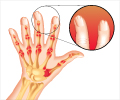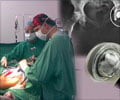If you are overweight, weight loss may improve osteoarthritis symptoms. Selective removal of old cells, senescent cells (SnCs) from joints can significantly delay the onset of osteoarthritis.

‘Sometimes called degenerative joint disease or degenerative arthritis, osteoarthritis is the most common chronic condition of the joints, affecting approximately 27 million Americans.’





This breakthrough research was led by Dr Chaekyu Kim from Ulsan National Institute of Science and Technology in Sounth Korea and Dr Ok Hee Jeon of the Johns Hopkins University in collaborations with the Mayo Clinic College of Medicine, the Buck Institute for Research on Aging, the University Medical Center Groningen, Unity Biotechnology, Inc., and the University of California, Berkeley. Senescent cells (SnCs) accumulate with age in many vertebrate tissues and are present at sites of age-related pathlogy. Although these cells play an essential role in wound healing and injury repair, they may also promote cancer incidence in tissues. For instance, in articular joints, such as the knee and cartilage tissue, SnCs often are not cleared from the area after injury, thereby contributing to OA development. To test the idea that SnCs might play a causative role in OA, they took both younger and older mice and cut their anterior cruciate ligaments (ACL) to minic injury. They, then, administered injections of an experimental drug, named UBX0101 to selectively remove SnCs after anterior cruciate ligament transection (ACLT) surgery.
Indeed, the research team reported that aged mice did not exhibit signs of cartilage regeneration after treatment with UBX0101 injections, The researchers noted that their findings provide new insights into therapies targeting SnCs for the treatment of trauma and age-related degenerative joint disease. The research appeared in Nature Medicine.
Source-ANI














